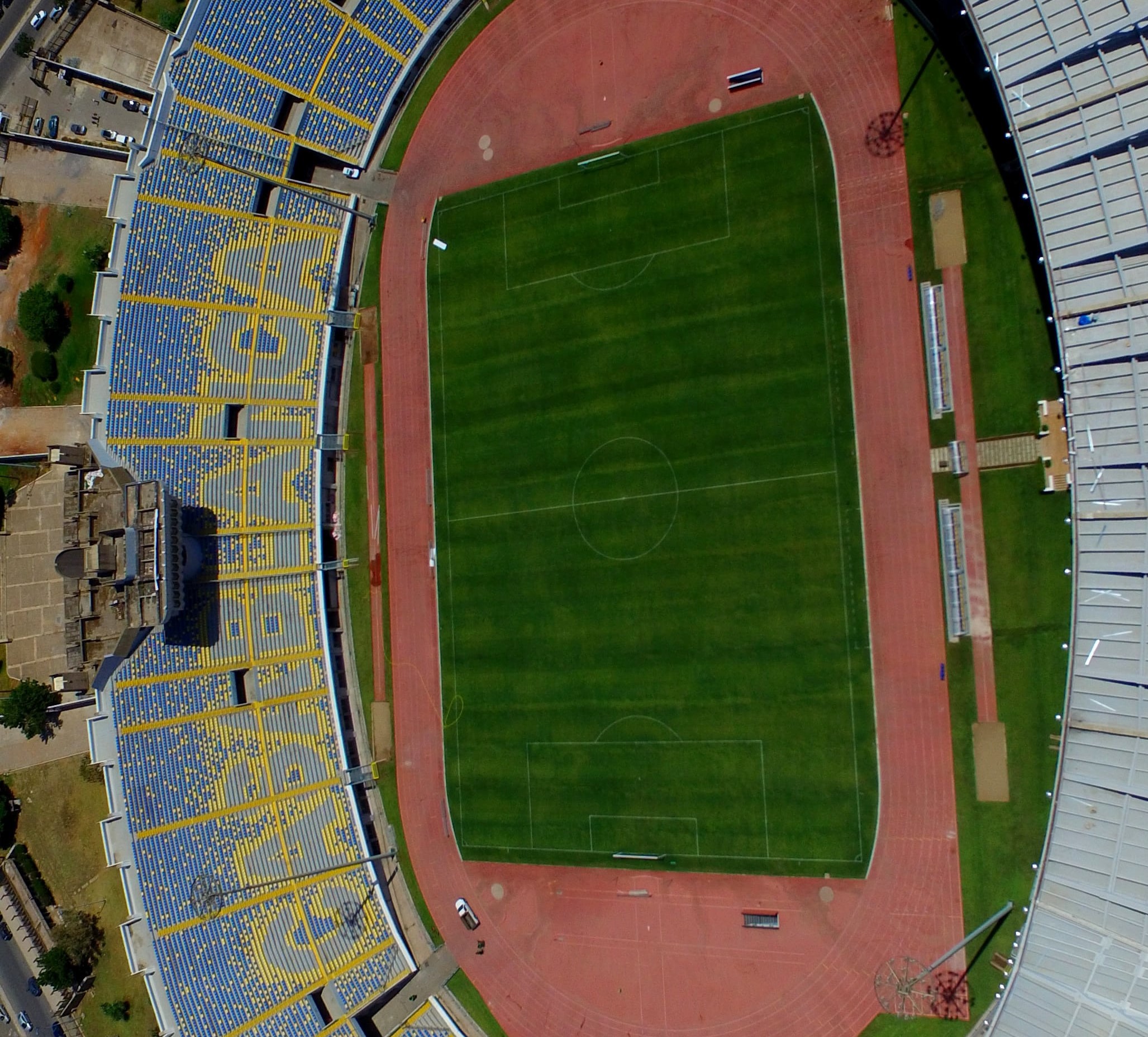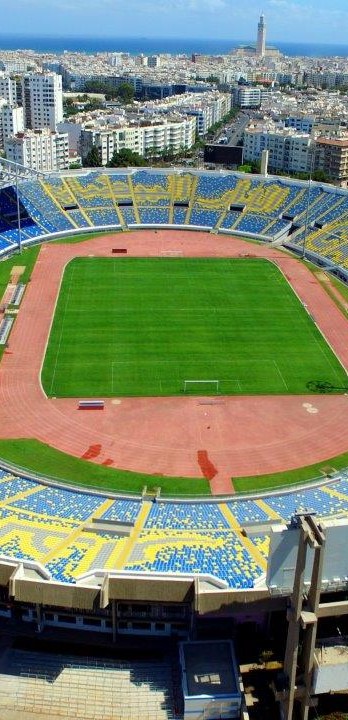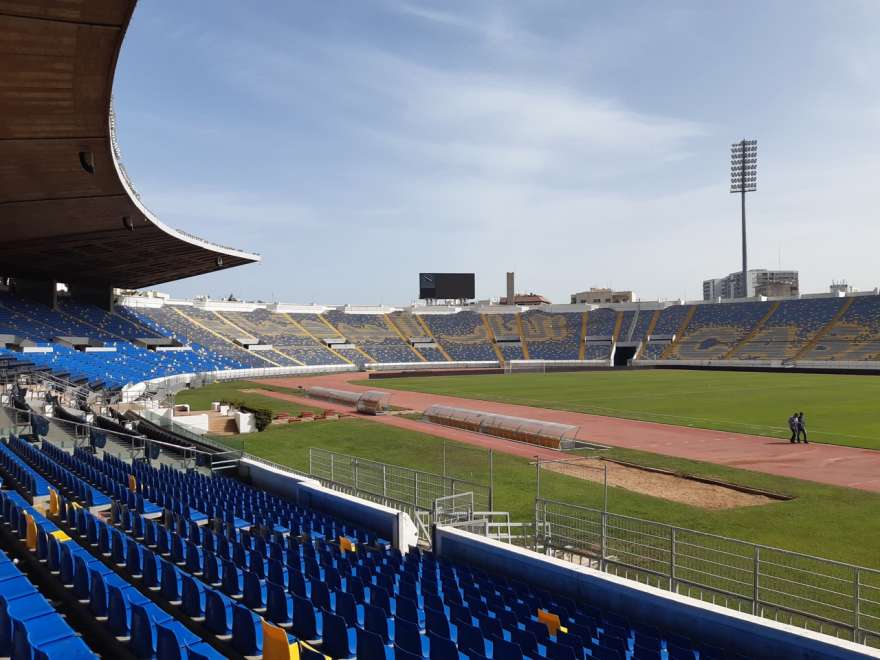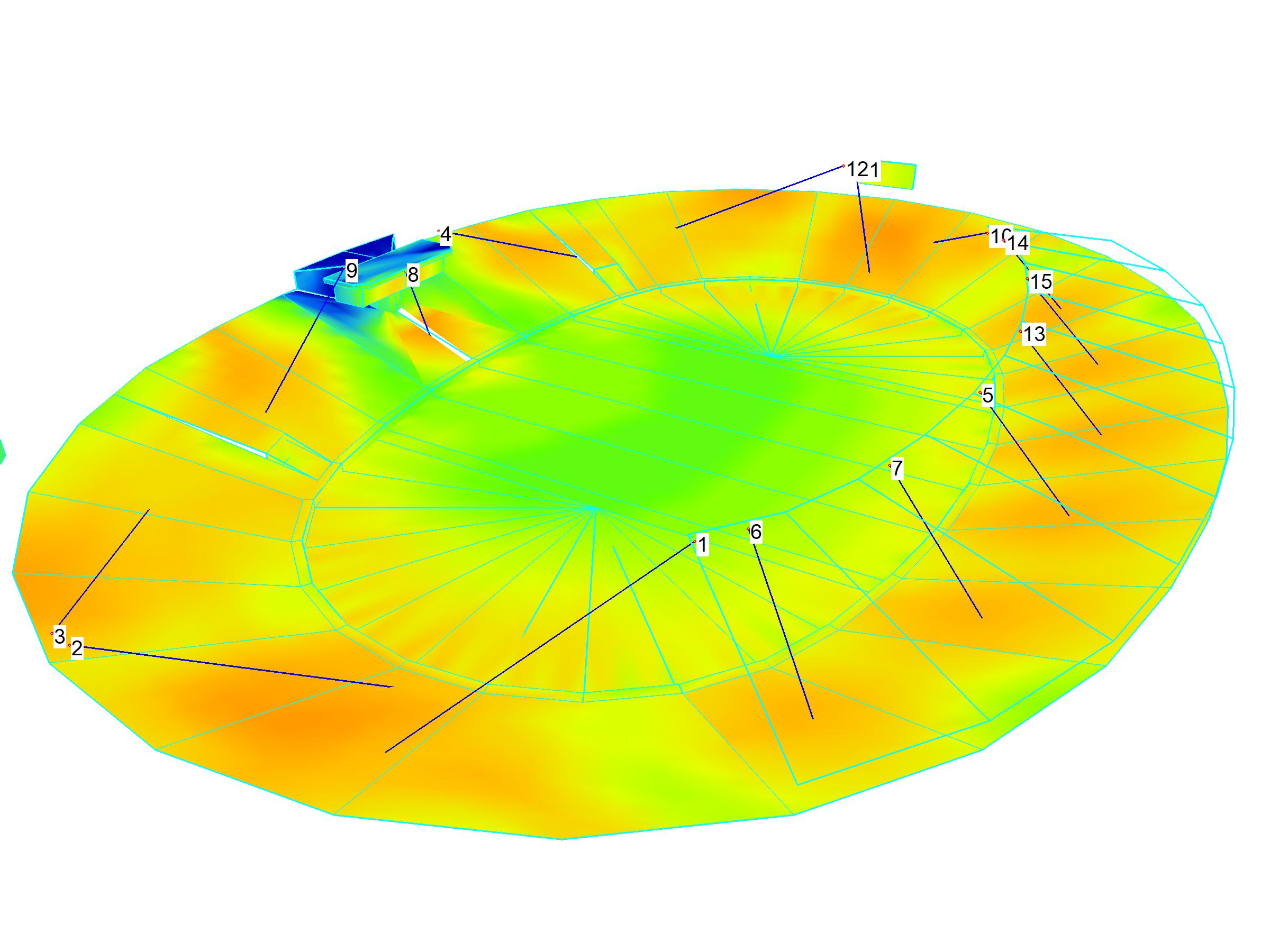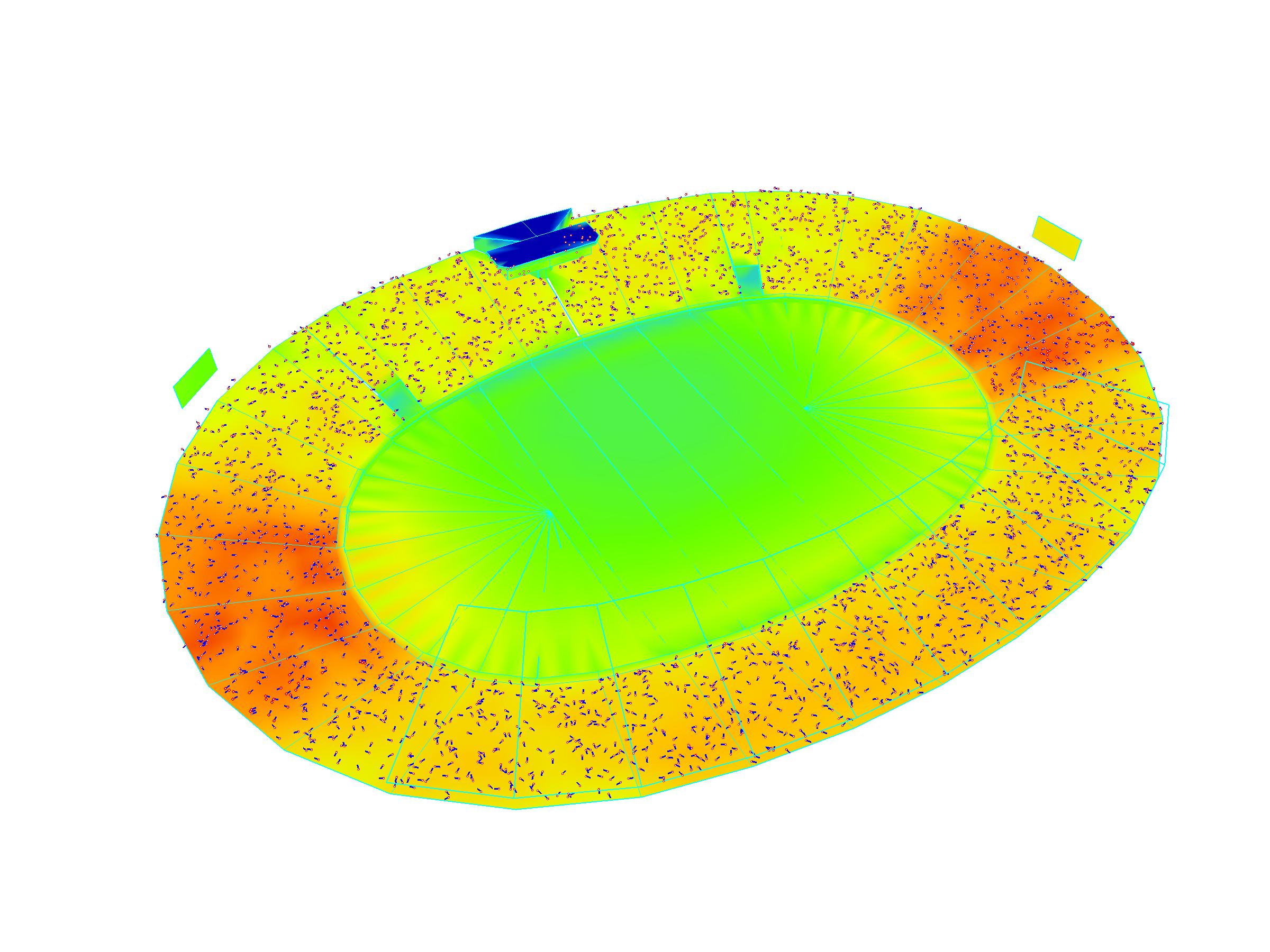30 years ago, anticipating the turning point of digital and 3D visualization, Tisseyre + Associés developed a tool for 3D models of the sound system of spaces: Hall Electro-Acoustics®. Instead of using the sound ray shooting technique which does not take into account the architectural details and which proves to be imprecise in large volumes such as stadiums, we use the finite element mesh technique which makes it possible to model with finesse all the details in order to efficiently integrate the sound system within the stadiums.
Custom sound system
The sound system in the stadiums must respond to an often complex arbitration:
- Ensure good sound coverage and perfect intelligibility at all points in the stadium;
- Do not cause nuisance to the neighborhood.
Thanks to the development of a tailor-made Line Array sound system, we were able to meet these two criteria.
Mastery of intelligibility
The intelligibility of the sound messages delivered by the sound system and received by the ears of the spectators will depend on:
- The sound pressure level delivered by the sound system and its emergence from crowd noise
- The directivity of the loudspeakers necessary to obtain the optimal listening areas and limit disturbing sound reflections;
- The distortion of the signal due to echoes or reflections from the sound emission of each of the loudspeakers, taking into account the obstacles constituted by the volume of the stadium;
The objective that must be met is that described in the standards NFEN 60849 of August 1998 and NFEN 60268-16 of August 1998. These standards respectively define the minimum intelligibility criteria that must be perceived by all spectators, i.e. an index of 0.7.
This index corresponds to a value STI = 0.5. For an intelligibility of the perceptions of words by direct method, this index corresponds to 90 % of intelligibility. The sound system must ensure the dissemination of messages in order to ensure the safety of people, standards NFS 61936 replaced by NFEN 60849.
